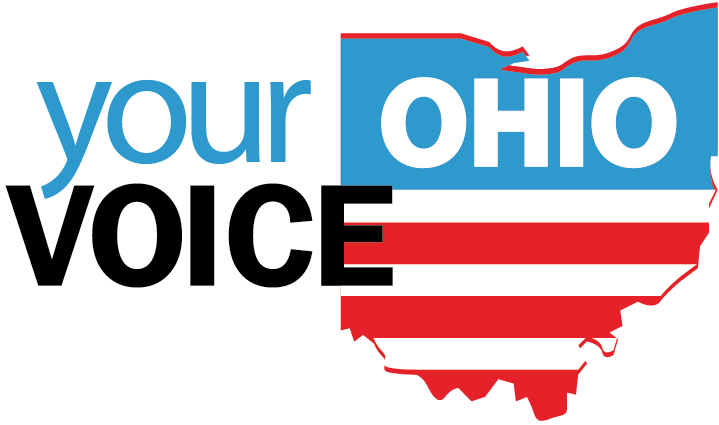There’s something refreshing about watching a diverse group of people come together on a difficult issue, recognize their differences yet figure out where they agree on a course of action. Journalists across Ohio watched that happen the last several months as we sat with hundreds of people who shared views on the addiction crisis and within two hours, in 11 different locations, arrive at similar solutions.
Wouldn’t it be great if politicians, rather than try to differentiate themselves from one another and likewise divide us, could reach the same kind of clarity in a few hours of heartfelt conversation?
This process, of sitting with folks who are willing to open up and then collaborate, is changing the way journalists involved in the Your Voice Ohio project view their role in democracy and their relationship with the community. We’re realizing that politicians, experts and even journalists, are out of touch with what Ohioans need on a daily basis to live better lives.
So, empowered with what hundreds of people told us about addiction, many journalists are thinking differently about how they could hold policy makers accountable.
In the next few weeks, we’re going to lay another issue on the table to help Ohioans and journalists do a better job of defining what the state needs from its next governor, lawmakers and local leadership.
Here’s the plan. Envision a more vibrant Ohio. What would it look like? And most importantly, how do we get there? And rather than throw out the people with whom we don’t agree – that won’t get us anywhere – join us in conversation, help us ask questions and find answers on your behalf.
A look at statewide polling data
We’re using the word “vibrant” because the 11 million people of Ohio are a delightfully messy bunch. We learned that much in a statewide poll in 2016 which surveyed thousands of people around the state of Ohio. The survey asked people: “To you personally, what is the most important problem facing the country right now?” In many different ways, Ohioans defined the economy as the number one issue.
We had to sort people out by their answers to get some idea of themes. Those we included in the “economic problems” category answered in several ways: economy as a general reference, or job, prices, poverty inequality, trade or other related issues. Those concerned about wealth inequality were the largest group — 35 percent — and jobs came second at 27%.
Of those concerned about wealth inequality, there were comments such as:
“Lack of good wages, there are jobs out there, but they do not pay enough.”
“The rich are getting richer while the poor are getting poorer.”
“Too much homelessness in the community.”
And for those naming jobs or unemployment as the most pressing issue, there was concern for high-quality, high-paying work, but also, simply, “We need to create more jobs for the economy,” and, “We need to get a lot of people to work who are young and able to work.”
Those poll results guided us in choosing vibrancy as a long-term topic that will take us to the 2020 presidential cycle. In the context of their own realities, Your Voice Ohio media partners hope to explore with their communities the possibilities of shared, sustainable vision for something better.
What are the elements of that “something better?”
The polling allowed people to offer solutions, too, and those were more diverse than the problems. For example, some said taxes needed to be lower. Do lower taxes work?
We’ll take a look at that idea as nearly 40 Ohio journalism outlets share data and resources to try to bring useful information to citizens and candidates for this important round of elections.
Here’s an early finding: In the early 1990s, Ohio allowed communities to create enterprise zones where new or expanding businesses could experience tax relief in exchange for jobs. In the early 1990s, almost every county, including Trumbull in Northeast Ohio, created an enterprise zone. The boundaries for Trumbull’s zone are astonishing—it covers about two-thirds of the entire county, which includes the communities of Warren, Niles and Lordstown Township.
In the data the news outlets will share, Trumbull will not be a poster child of success. In spite of the enterprise zone and tax abatement, the number of jobs in Trumbull peaked in 1997 at nearly 100,000 and now stands at 69,100 and declining. More than one in four jobs disappeared in the last 20 years. More alarming is that since the worst of the Great Recession in 2010, Trumbull county employment has slipped another 1 percent while the state has grown 8 percent.
In the last 30 years, Trumbull County has granted reduced taxes on $471 million in real estate. Has that benefited the people?
In 1979, Trumbull reached its peak median household income of $61,702 inflation-adjusted dollars – 10 years before creation of the enterprise zone. Today, it’s $46,352, down 25 percent.
Trumbull isn’t an aberration.
Counties that have shared experiences are Allen (Lima), Clinton (Wilmington), Clark (Springfield) and several in Southeast Ohio.
And for our state as a whole, median household income, at last check, was down more than any other state since 2000, with the exception of Nevada.
But the Your Voice Ohio project, while looking at what didn’t work, will more importantly help Ohioans discuss what works. There is a handful of counties going in the opposite direction. Do you know which ones? What makes them different? Why is population growing, their job market improving and household income doing well?
We’ll explore that, and at the same time encourage Ohioans to collaborate with journalists. What do we see elsewhere that creates excitement for a better life, and what do we need to do to get there?
Get Involved
There’s a few ways you can get involved and shape our reporting:
- Submit a question you want to know more about or share your personal story. Reporters will dig deeper into the questions with the most votes, and we’ll share what we find in both our online and print editions.
- Like and follow Your Voice Ohio on Facebook and Twitter, where you’ll find our stories along with the stories of journalists working across the state on these issues.
- Sign-up for the Your Voice Ohio newsletter. They answer a new question every week, asked by citizens of Ohio. Each month, they’ll explore a different topic relating to vibrancy, along with a feature on solutions to the addiction crisis.
June – Ohio’s economy: where are we now?
July – Jobs in Ohio
August – Wealth Inequality in Ohio
We invite you to learn more, offer your thoughts, and when we launch community meetings to discuss vibrancy, please join us.
Contributing data to this report were former Beacon Journal investigative reporter David Knox and Beacon Journal public policy reporter Doug Livingston.






They say that our current President has declared a state emergency because of the opioid crisis. But the question remains what is being done to provide financial help to develop more treatment centers for other types of drug addiction, specifically methamphetamine addiction? Why is it that financial help seems promised to only bigger towns like Columbus and seems to be none for smaller counties like Licking County? And why is it that Licking County and other smaller towns seem to not be able to access financial help faster or have not been let in on where the financial backing and grants are at? We here in Licking County are being slowly swallowed up by big business and gerrymandering but those who live in poverty are being pushed out by the increase in big business, but still people with felonies still can’t get a good job or treated equally by companies that hire them temporarily then cut them loose after ninety days because of those felonies. My question is if people with felonies were good enough workers for ninety days and their felonies did not seem to be a problem during those ninety days, why can’t they be hired on full-time at a decent wage?I will await future responses to these issues.